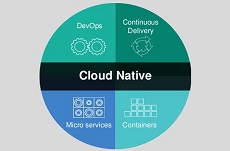
In the fast-paced landscape of modern business, staying ahead of the competition requires adopting innovative technologies that enhance efficiency, scalability, and agility. One such technology that has revolutionized the way applications are built and deployed is cloud-native application development. This approach leverages the power of cloud computing to create applications that are not only resilient and scalable but also align with the dynamic needs of today’s businesses.
Scalability and Flexibility
Cloud-native application development enables businesses to scale their applications effortlessly. Traditional monolithic applications often struggle to handle sudden spikes in demand or accommodate growing user bases. In contrast, cloud-native applications are designed with a microservices architecture, allowing different components of the application to scale independently. This modular approach ensures that resources are allocated efficiently, providing businesses with the flexibility to scale up or down based on real-time requirements.
Leveraging Outsourced Development Teams for Cloud-Native Excellence
In the realm of cloud-native application development, the decision to outsource development teams has emerged as a strategic move for many businesses. Outsourcing offers a unique set of advantages, complementing the benefits of cloud-native practices. By tapping into the expertise of skilled professionals, organizations can accelerate their cloud-native journey while maintaining focus on their core competencies. Outsourced teams bring diverse experiences and perspectives to the table, offering fresh insights into best practices and the latest technologies. This allows businesses to integrate an efficient team as a service solutions. Additionally, outsourcing allows businesses to access global talent pools, ensuring a broader range of skills and a deeper understanding of regional nuances. When paired with cloud-native principles, outsourcing becomes a powerful strategy for businesses looking to stay ahead in the dynamic landscape of modern software development.
Faster Time-to-Market
In the competitive world of business, getting products and services to market quickly is crucial. Cloud-native development accelerates the development lifecycle by facilitating continuous integration and continuous delivery (CI/CD). Developers can push updates and new features seamlessly, reducing time-to-market and allowing businesses to respond swiftly to changing market conditions. This agility is a significant advantage in industries where innovation and responsiveness are key to success.
Cost Efficiency
Traditional on-premises infrastructure often requires substantial upfront investments and ongoing maintenance costs. Cloud-native development, on the other hand, leverages the pay-as-you-go model of cloud services. Businesses only pay for the resources they use, which can lead to significant cost savings. Additionally, the automated scaling capabilities of cloud-native applications optimize resource utilization, eliminating the need for over-provisioning to accommodate potential peaks in demand.
Enhanced Reliability and Resilience
Cloud-native applications are designed with resilience in mind. The use of microservices means that if one component fails, it doesn’t bring down the entire application. This fault isolation improves the overall reliability of the system. Cloud providers also offer geographically distributed data centers and redundancy options, ensuring that applications remain available even in the face of hardware failures or regional outages. This increased reliability is essential for maintaining a positive user experience and building trust with customers.
Security and Compliance
Security is a top concern for businesses, especially as cyber threats continue to evolve. Cloud-native development allows organizations to benefit from the security measures implemented by major cloud providers. These providers invest heavily in security infrastructure, including encryption, access controls, and regular security audits. Additionally, cloud-native applications can easily implement compliance requirements, ensuring that businesses meet industry regulations and standards.
DevOps Culture and Collaboration
Cloud-native development encourages the adoption of DevOps practices, fostering collaboration between development and operations teams. This cultural shift leads to more efficient communication, faster issue resolution, and a shared responsibility for the entire application lifecycle. By breaking down silos between development and operations, businesses can achieve higher levels of automation, reducing manual errors and streamlining the deployment process.
In conclusion, the benefits of cloud-native application development are driving a paradigm shift in how businesses approach software development. The scalability, flexibility, cost efficiency, enhanced reliability, security, and collaboration fostered by this approach position organizations for success in an increasingly competitive and dynamic business environment. As businesses continue to embrace digital transformation, adopting a cloud-native mindset will be instrumental in unlocking the full potential of modern technology.






